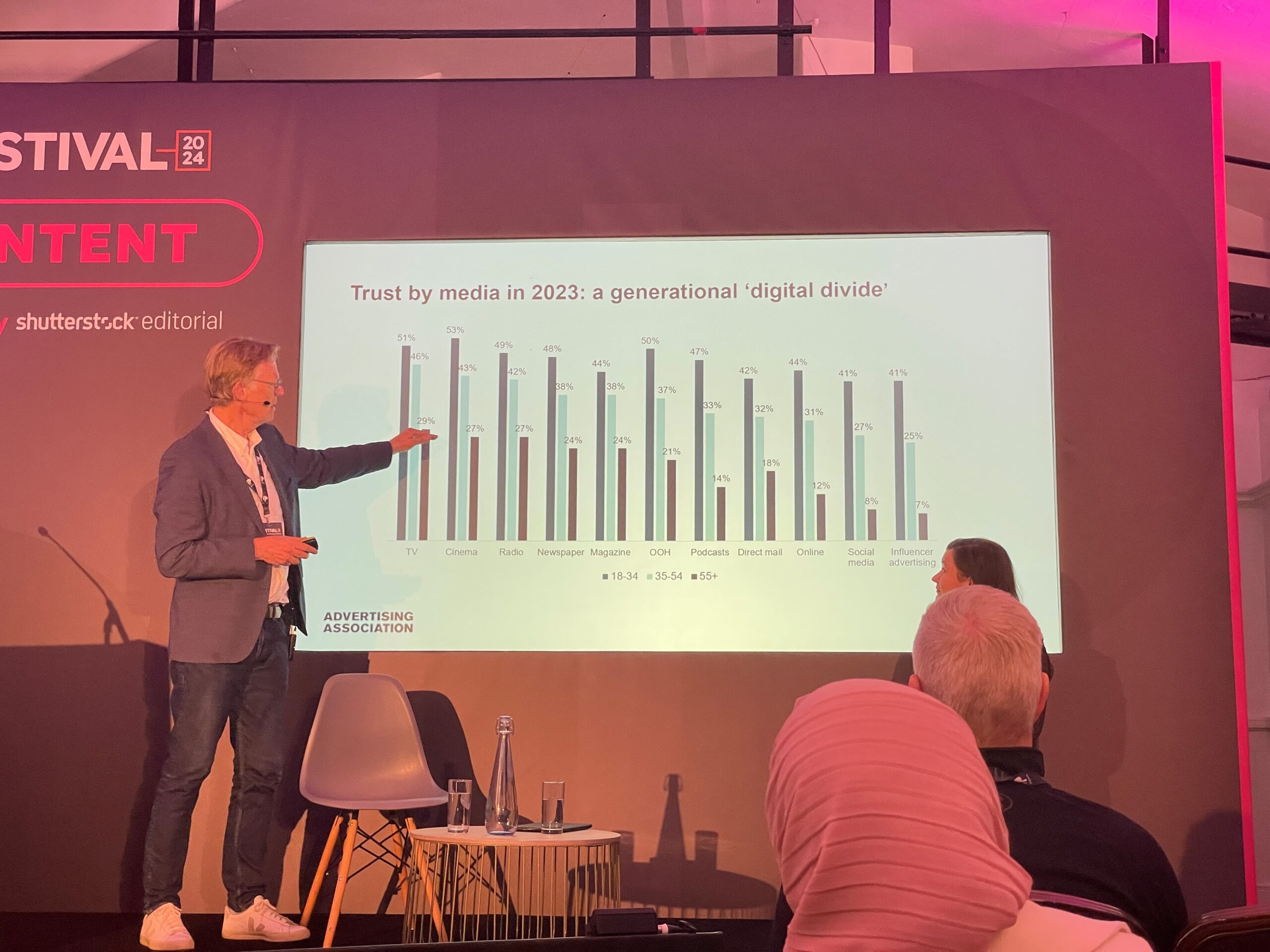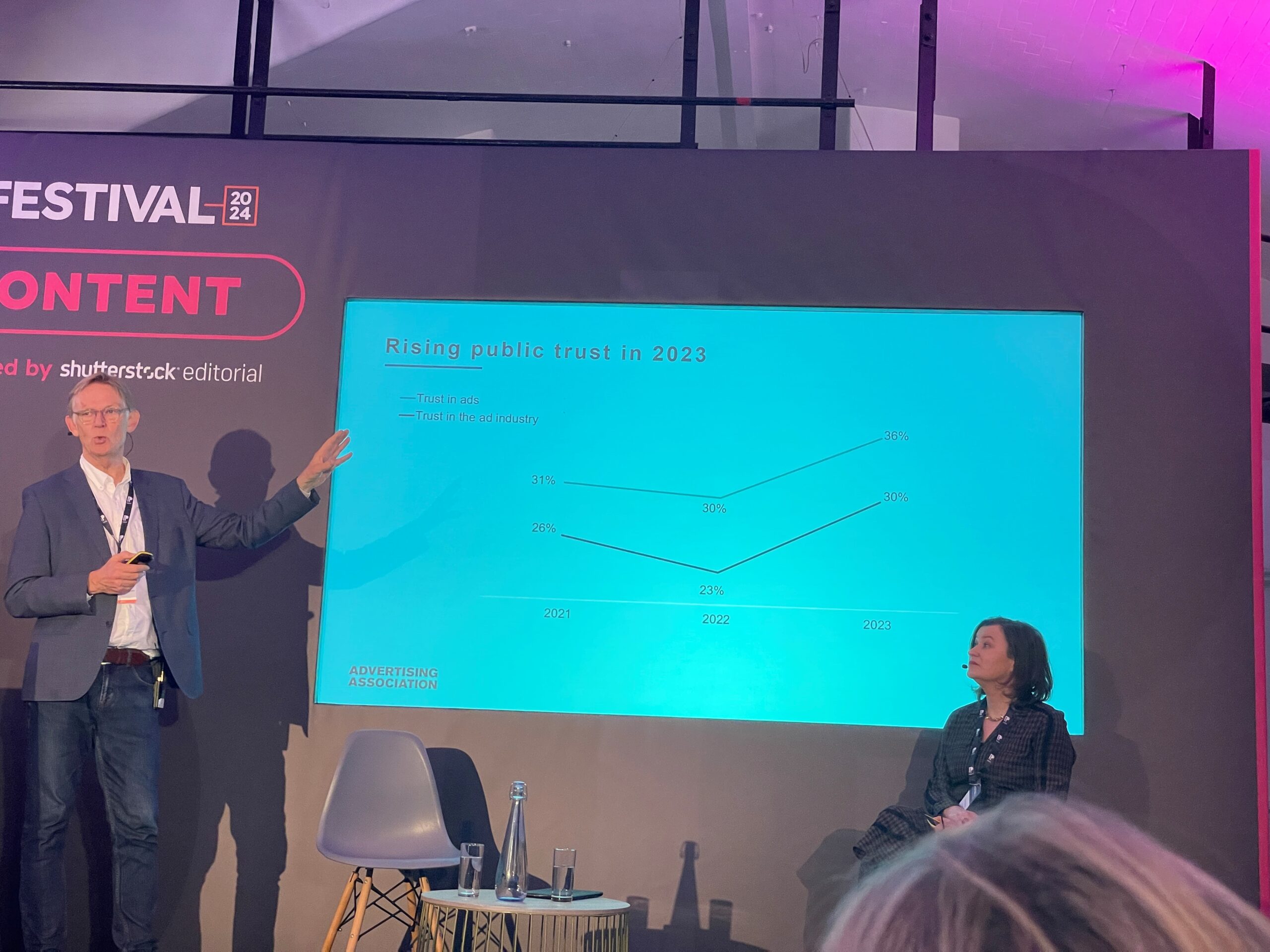Generation gap: Youth more trusting of advertising than older people

Trust in advertising and media varies significantly by age.
While 50% of 18- to 34-year-olds say they trust advertising, just 39% of those aged 35-54 and 22% of those aged 55-plus agree.
Similarly, younger people reported significantly more trust in different media channels than older generations.
Those are the findings from new research by the Advertising Association (AA), presented at the PPA Festival in London on Tuesday.
AA CEO Stephen Woodford explained that trust is “very, very polarised by age”, with younger people more trusting of advertising despite them spending less time with traditional media that is often considered more trustworthy.
“55-plus are much, much less trusting of advertising. Young people — much more trusting,” he said. “Often, this gets into a debate about new media, old media, digital media, traditional media — but it’s much more complex than that. Younger audiences are much heavier consumers of digital media and they are the most trusting.”

Gap varies by medium
Breaking trust down by medium, the divide is shown in stark terms. Across the board, 18-34s trust media at much higher rates than older generations. This is particularly striking for digital channels.
For example, whereas 51% of 18-34s and 29% of over-55s say they trust TV advertising, this gap widens significantly when considering trust in influencer advertising, where 41% of 18-34s say they trust it compared with just 7% of over-55s.
“Influencer advertising has rock-bottom levels of trust among over-55s,” Woodford explained. “But the young trust influencers pretty strongly — not that much of a difference to the rest of the media. And another interesting fact is this has really changed over the last few years.”
In particular, Woodford pointed to increased regulation of influencer advertising to explain why younger individuals have begun trusting the medium more.
Still, online, social media and influencer advertising were least trusted among the general public, thanks to such lack of trust among older cohorts.
“Wherever your brands sit in the marketplace, it is really worth thinking about the audience and their ingoing disposition to trusting the advertising that they see,” added Woodford.
‘Green shoots’ in trust
Overall, Woodford noted that there has been a gradual long-term decline in trust in advertising since the 1990s. Trust in media more broadly, meanwhile, has “drifted down slightly” in recent years, thanks in part to various scandals such as phone-hacking.
However, between 2022 and 2023, the industry saw “green shoots” of recovered trust — something that Woodford said included “really strong improvements across all media”. Indeed, trust in advertising across media channels grew 4-6% between 2022 and 2023.

The AA previously reported that the recent ad campaign for the Advertising Standards Authority (ASA) significantly boosted public trust in advertising. For example, trust in online ads was found to have jumped from just 15% among those who weren’t exposed to the ASA campaign to 36% among those who did. A similar increase in trust was found in TV (from 31% to 46%).
Woodford called it a “silver bullet” for the industry to increase trust by communicating the existence of the ad standards regulator.
“If we were a brand tracking shifts in brand awareness, we would be ecstatic about the results [of the ASA campaign]. We had a marketing director that was a chair of our group looking at this. I said: ‘What would you do if you had these results on your advertising?’ He said: ‘I would be going to the CEO and ask him to double the budget.’ That’s extraordinarily effective advertising.”
Overcoming distrust
Woodford remarked that older generations have perhaps been made “uncomfortable” by the digital revolution and this in turn impacted their trust in media. For publishers — many of which target older consumers — the challenge is to retain trust in their brand even if trust in advertising slips.
“Consistency is key”, Woodford said, in terms of brand, tone of voice and authority across platforms in which a publisher operates. He signalled that Good Housekeeping, for example, maintains consistency of its content be it social video, print or digital. Good Housekeeping‘s head of accreditation, Laura Cohen, shared the stage with Woodford at the panel.
“The interaction you have with your readers is so important,” he said. “It’s true for publishers like it is for any brand. Know your customers and know their experience in every format.”
Woodford reminded the audience that, even for the most trusted brands, things still go wrong from time to time and how they react is most important for maintaining and building trust, especially given that trust can be “built over years and lost in minutes”.
He added: “It’s all about the speed, honesty and clarity with which you handle [crises]. It’s not the original thing but the cover-up that often determines the outcome.”
Woodford believes, for example, that brands should apologise when they get something wrong, noting: “We trust people we like. It’s the same with brands. If a brand gets it wrong, tell people you got it wrong.”




